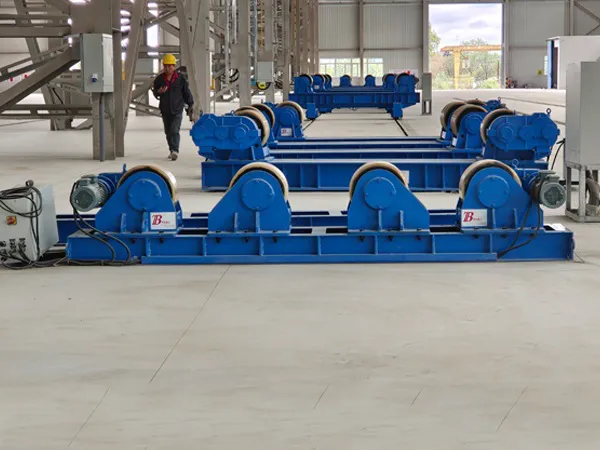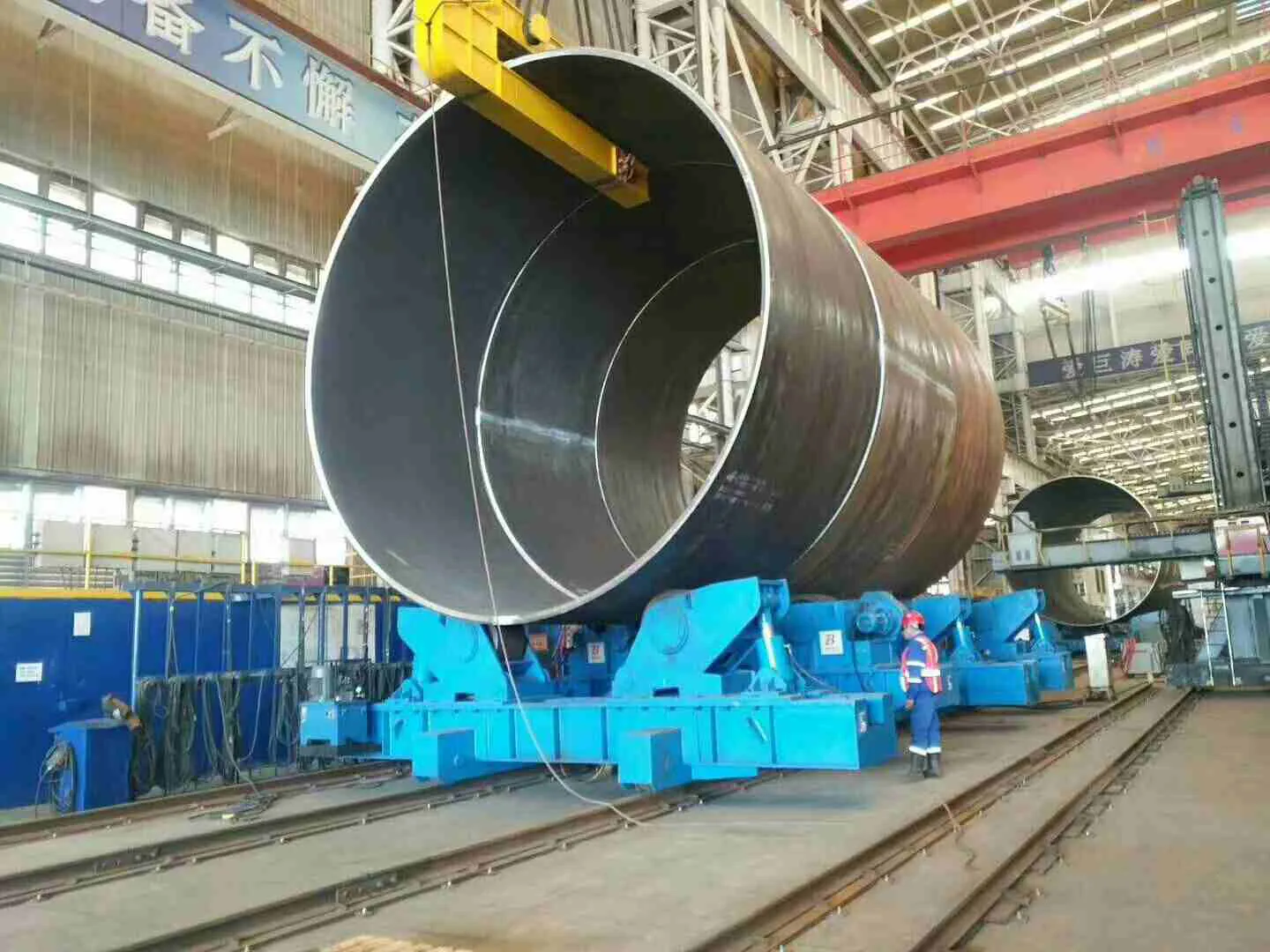Con el impulso global hacia la energía sostenible, La generación de energía eólica se ha convertido en una parte esencial del panorama de las energías renovables.. Como componente estructural central de una turbina eólica, La torre de la turbina eólica juega un papel vital en el rendimiento general y los plazos del proyecto.. Por lo tanto, mejorar la eficiencia de fabricación y la calidad de la soldadura se ha convertido en una máxima prioridad para los fabricantes..
Entre los equipos avanzados utilizados en las líneas de producción modernas, la rotador de soldadura (también conocido como rodillo giratorio) destaca como una solución clave que ayuda a los fabricantes a aumentar la productividad, mejorar la precisión de la soldadura, y garantizar la seguridad de los trabajadores durante la fabricación de torres eólicas.

Desafíos en la fabricación de torres eólicas
La producción de torres de turbinas eólicas es un proceso complejo que implica múltiples pasos de fabricación y soldadura a gran escala.. Los fabricantes a menudo enfrentan varios desafíos comunes:
Tamaño y peso masivos: Las torres de los aerogeneradores son largas, Estructuras cilíndricas pesadas. Los métodos tradicionales de manipulación y posicionamiento manual son ineficientes y plantean riesgos para la seguridad..
Requisitos estrictos de calidad de soldadura: Las secciones de la torre deben soportar cargas de viento extremas.. Incluso los defectos menores de soldadura pueden causar problemas estructurales graves..
Ciclos de producción cortos: La creciente demanda mundial de energías renovables presiona a los fabricantes para que produzcan más torres en menos tiempo.
Operaciones intensivas en mano de obra: La rotación y alineación manuales consumen mucho tiempo y esfuerzo, Aumentar la probabilidad de errores de soldadura relacionados con la fatiga..
Para superar estos desafíos, Los fabricantes recurren cada vez más a soluciones de soldadura automatizadas., Con el rotador de soldadura convirtiéndose en una parte indispensable de las modernas líneas de fabricación de torres..
Cómo los rotadores de soldadura mejoran la eficiencia de fabricación

Un rotador de soldadura es un dispositivo especializado diseñado para soportar y rotar piezas de trabajo cilíndricas durante la soldadura.. En la fabricación de torres eólicas, sus beneficios son particularmente evidentes:
1. Posicionamiento preciso para una calidad de soldadura superior
Los rotadores de soldadura permiten que la sección de la torre gire de manera suave y constante, Mantener la junta soldada en la posición más favorable para soldar.. Esto permite que los soldadores o los sistemas de soldadura automatizados funcionen en una posición plana u horizontal constante.,minimizando la soldadura vertical y aérea. Como resultado, La uniformidad y la penetración de la soldadura mejoran., mientras que defectos como la inclusión de escoria y la falta de fusión se reducen significativamente.
…
Para obtener información más detallada sobre cómo los rotadores de soldadura pueden mejorar la eficiencia de fabricación de torres eólicas, por favor haga clic para visitar: https://www.bota-weld.com/en/a/news/how-welding-rotators-enhance-manufacturing-efficiency.html


